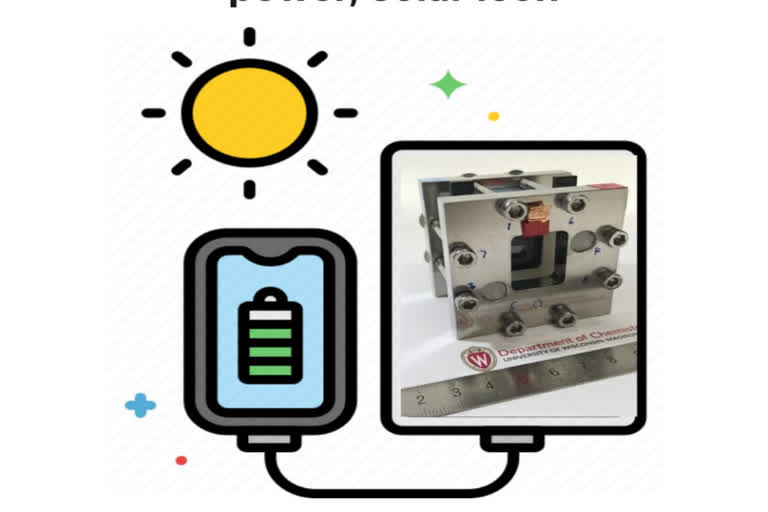MADISON, Wis.: The new device is made of silicon solar cells combined with advanced solar materials integrated with optimally designed chemical components, are efficient than the previous record holder for solar flow batteries, also developed by the Jin lab in collaboration with researchers from the University of New South Wales and the University of Sydney in Australia, Utah State University, King Abdullah University of Science and Technology in Saudi Arabia and the City University of Hong Kong.
The researchers published their work on July 13 in the journal Nature Materials.
Flow batteries could be a good substitute for lead-acid or lithium-ion batteries for electricity storage. It could be less expensive at a larger scale and are an ideal storage choice for merging with solar cells. This is possible as it increases the efficiency of traditional silicon solar cells by capturing more energy from the sun.
Jin Lab has been working for years studying and improving integrated solar flow battery systems. This new breed of highly efficient perovskite-silicon solar cells is on its way to commercialization. Yet silicon remains key for making a stable device that can withstand the chemicals in a flow battery.
"Our motivation for the design of the solar cell was to combine these two materials together so we have both high efficiency and good stability," says Li.
To predict the ideal voltage that the flow batteries should run at, Li developed a new theoretical modeling method. The modeling allowed him to select a pair of chemicals in the flow battery that would operate at the ideal voltage based on the characteristics of the solar cell, maximizing efficiency. The chemicals are organic compounds, not expensive metals as in traditional flow batteries, and are dissolved in a benign water solution of table salt rather than strong acids.
